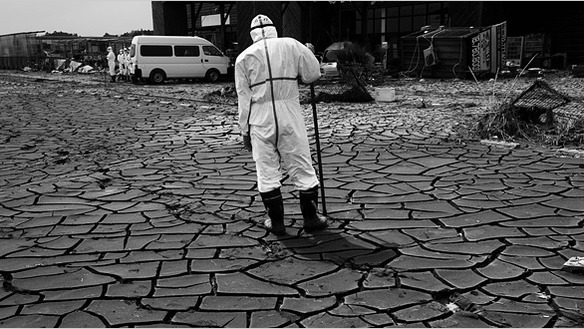Tokyo to become dumping ground for radioactive rubble from Fukushima disaster

Authorities from Fukushima and other disaster-stricken areas in Japan say they do not have the capacity to process and dispose of all the radioactive rubble left over from the massive earthquake and tsunami that struck back in March.
A large portion of that waste is going to be transferred to Tokyo, according to a recent report by The Mainichi Daily News, a move that some are concerned may result in additional environmental and human harm.
The massive amount of wrecked vehicles, destroyed homes and structures that were generated in eastern Japan after the 9.0+ earthquake and tsunami is simply too much for local processing facilities to handle. Reports indicate that some coastal areas generated as much as 4.35 million metric tons of waste each from the disaster, and local facilities are running far short of intended capacity in meeting the central government’s processing and disposal deadline.
After discussing the issue with various local authorities, officials in Tokyo have agreed to accept roughly 500,000 metric tons of this waste at its local facility, which it plans to gradually dispose of over a two-and-a-half year period. About 1,000 tons of it are already set to be transported by freight train to processing facilities near Tokyo, where it will either be burned or buried depending on its contamination level.
But how radioactive is this waste, truly, and is it safe to begin transporting large amounts of it to areas located in very close proximity to Japan’s largest population center? Many are now asking this question as the government moves forward with its plans, especially since ash left over from burning contaminated rubble has in some cases exceeded 100,000 becquerels per kilogram (Bq/kg).
Tokyo authorities say they will continually monitor the imported waste to make sure it does not exceed the 8,000 Bq/kg maximum limit set by the national government. In a recent sample taken, authorities detected only 133 Bq/kg of radioactive cesium in ash left over from rubble incineration at one location, which is well below the maximum limit.
The total cost of disposing of radioactive rubble created by the disaster is expected to top one trillion yen, according to Japan’s Environment Ministry. And this does not include the costs associated with maintaining temporary storage facilities or testing the waste’s radiation levels, which could add several trillion more yen to that total (http://mdn.mainichi.jp/mdnnews/news…).
Sources for this story include:
http://mdn.mainichi.jp/mdnnews/news…
Naturalnews.com
By: Jonathan Benson

Commenting rules and guidelines
We value the thoughts and opinions of our readers and welcome healthy discussions on our website. In order to maintain a respectful and positive community, we ask that all commenters follow these rules:
We reserve the right to remove any comments that violate these rules. By commenting on our website, you agree to abide by these guidelines. Thank you for helping to create a positive and welcoming environment for all.